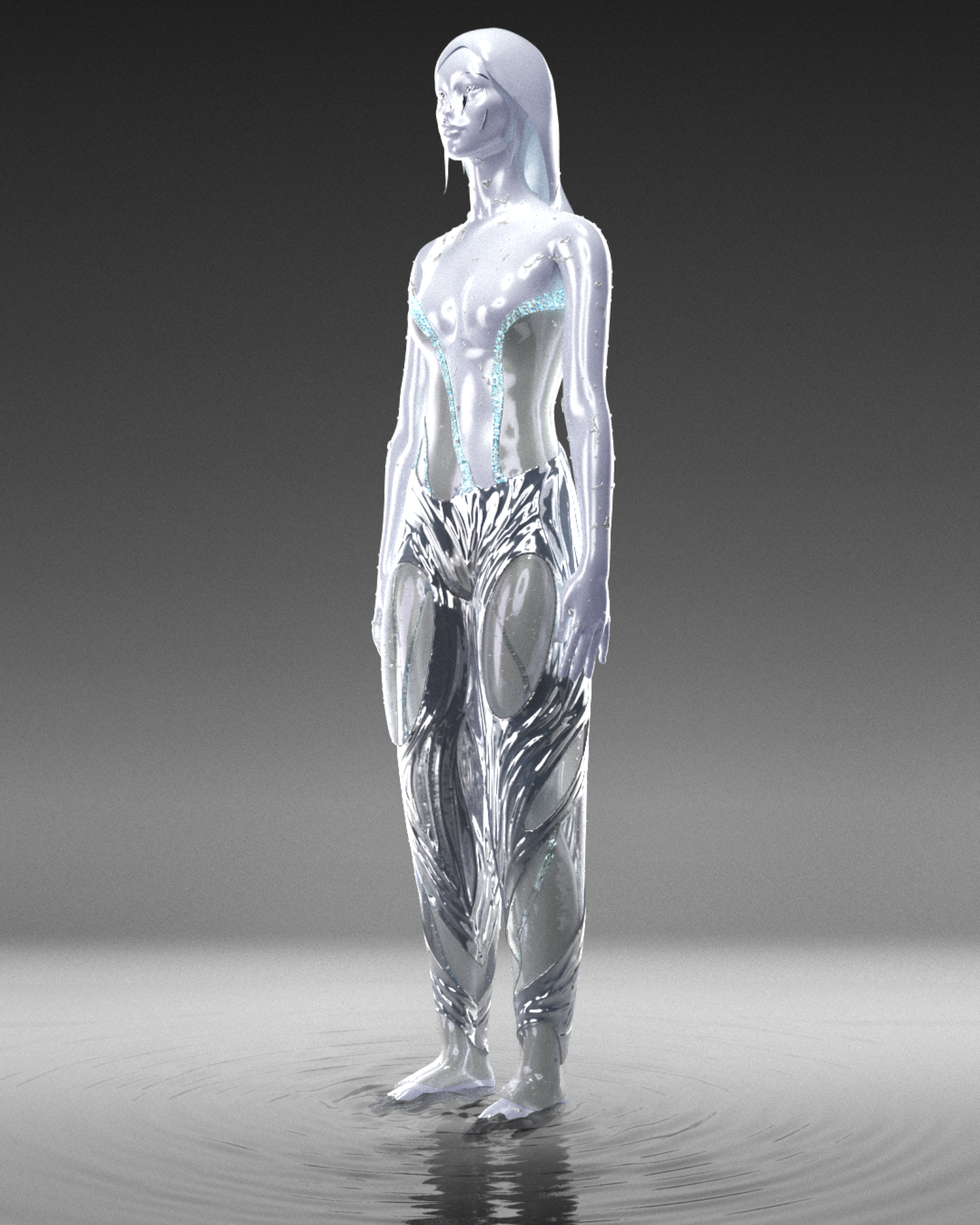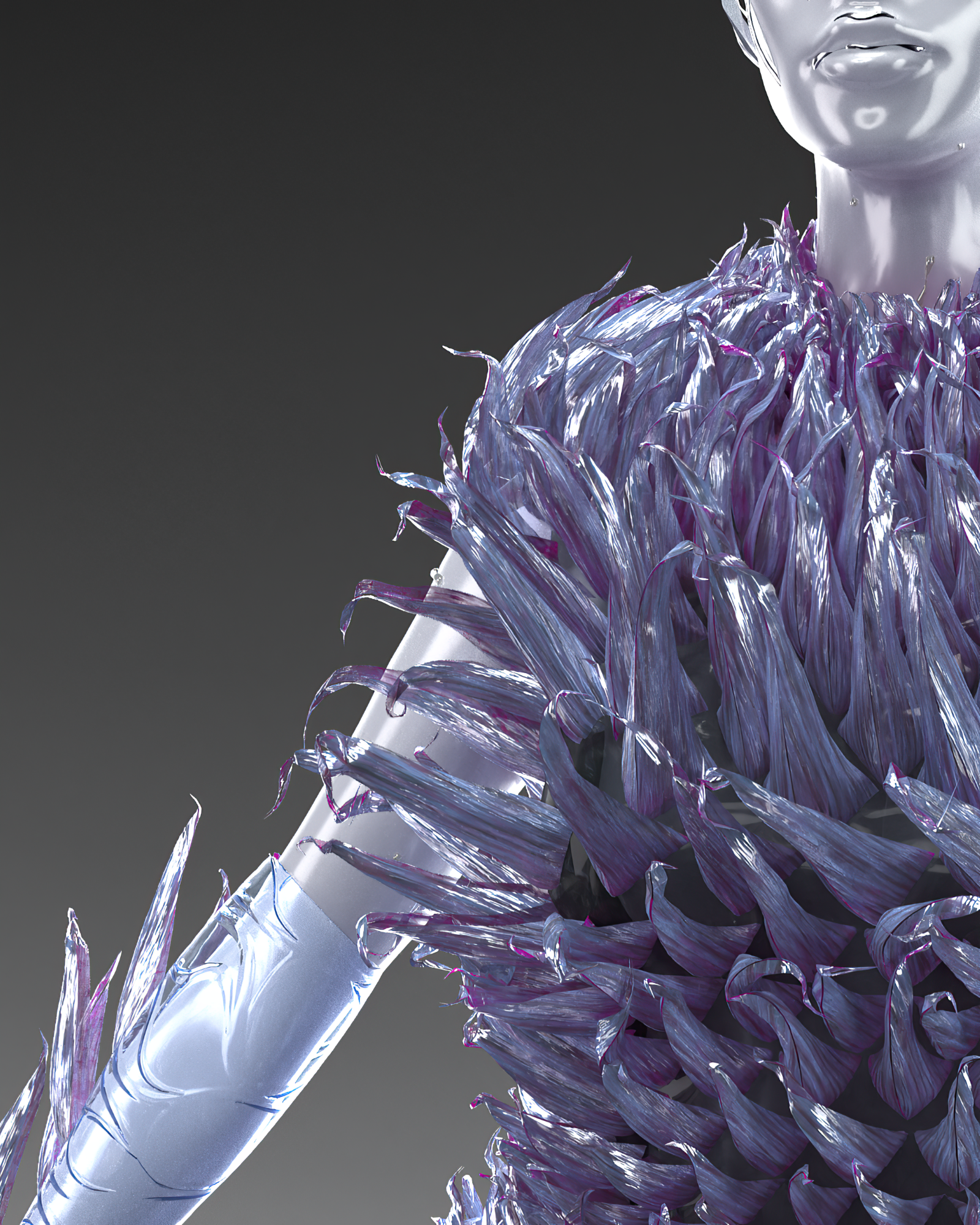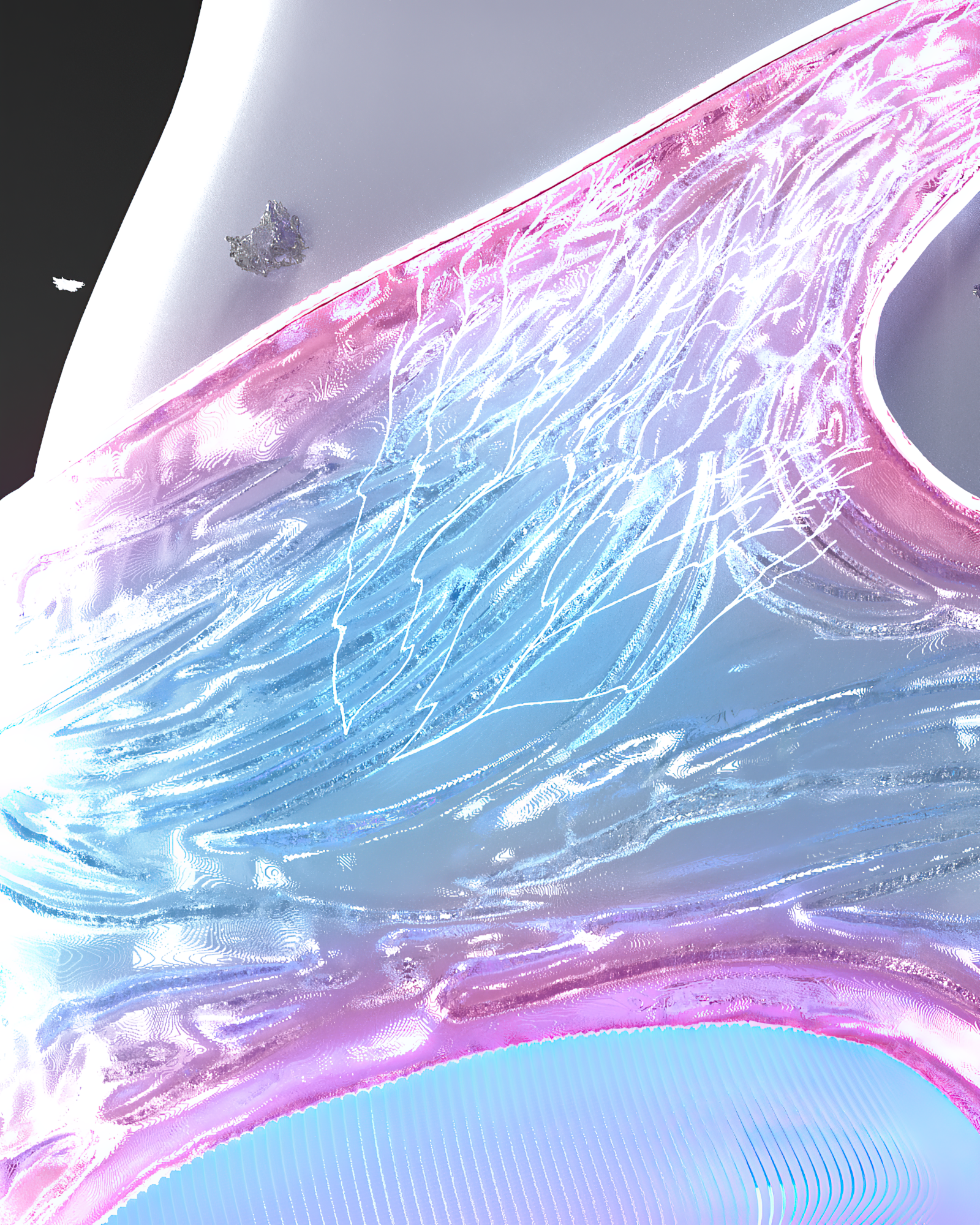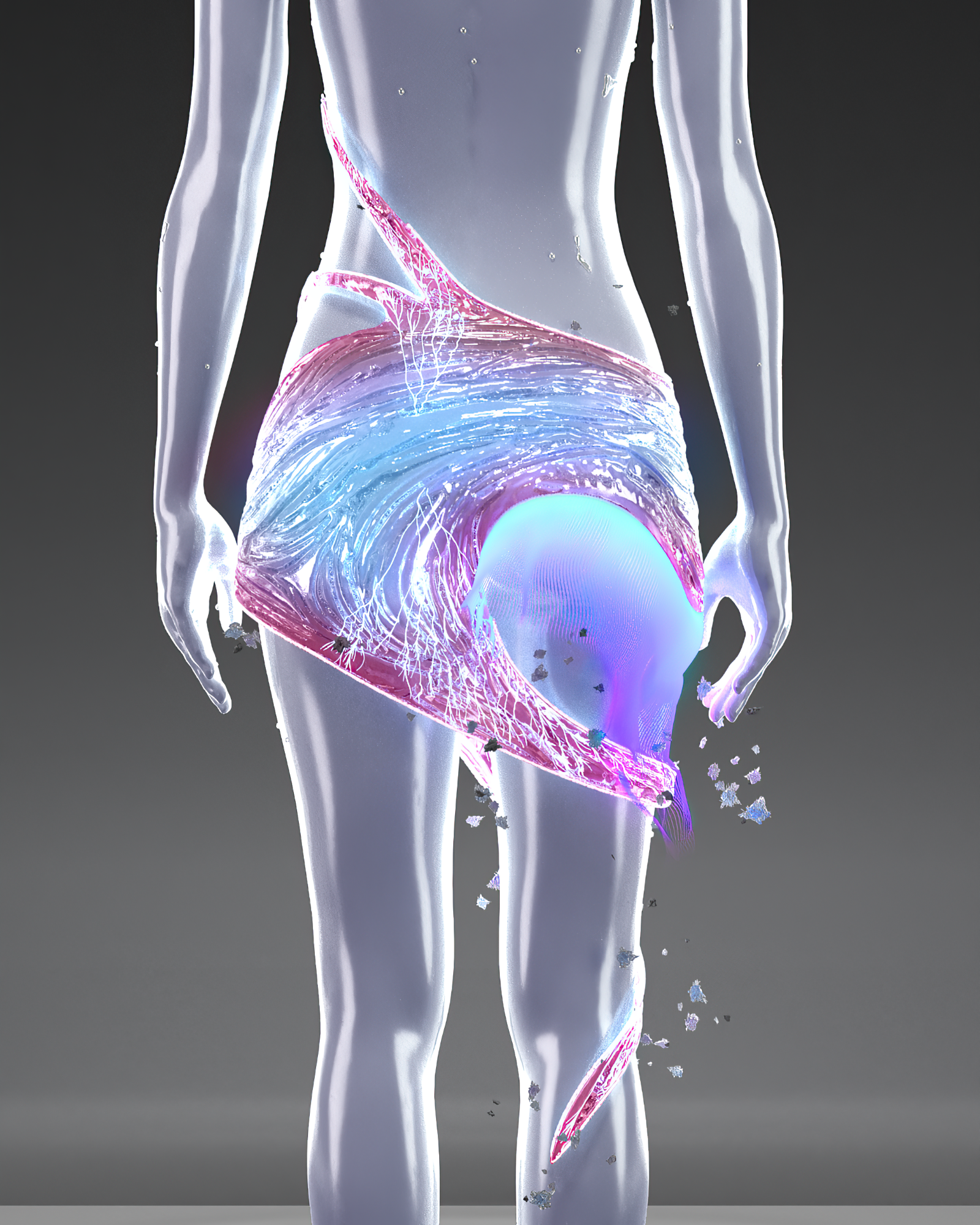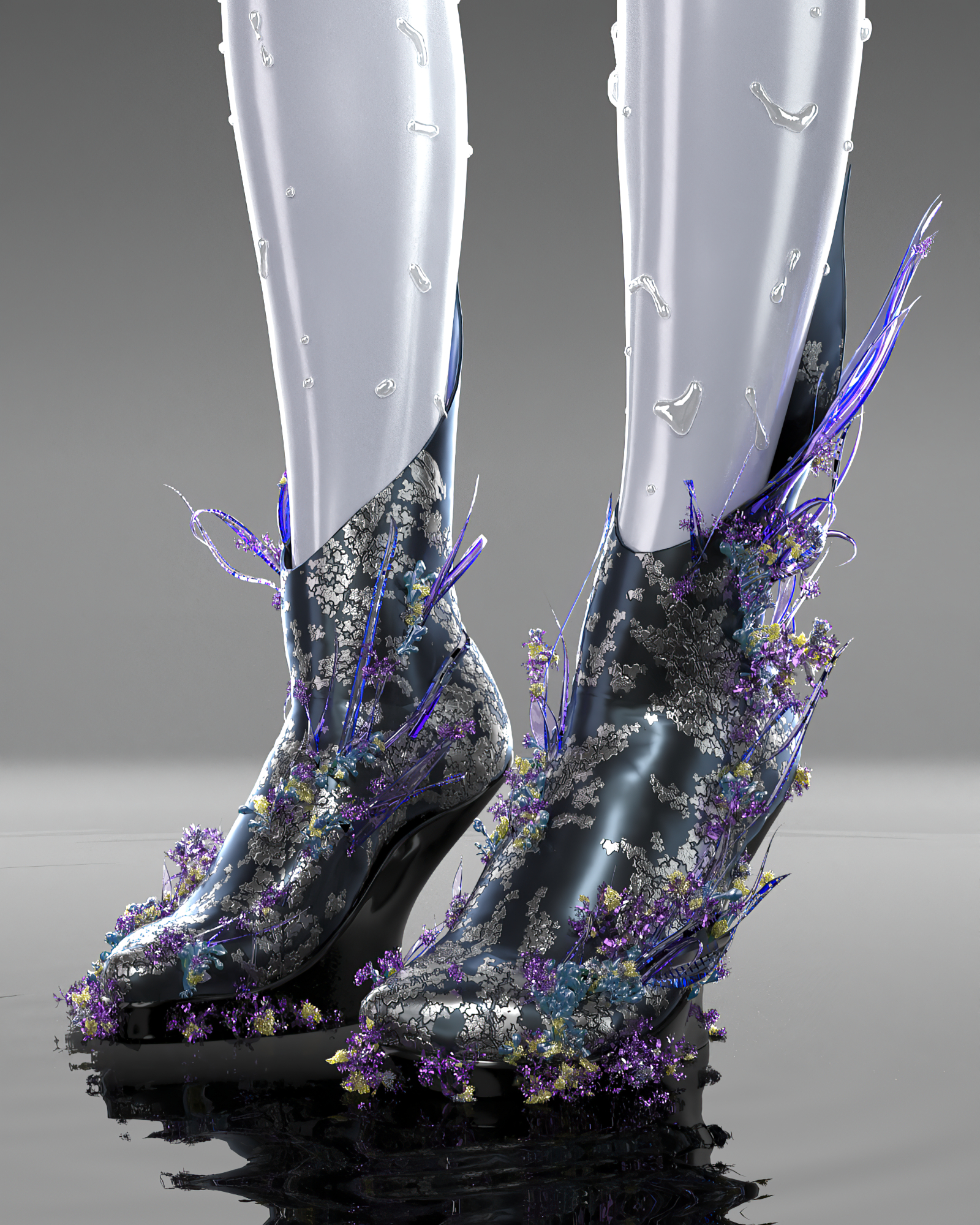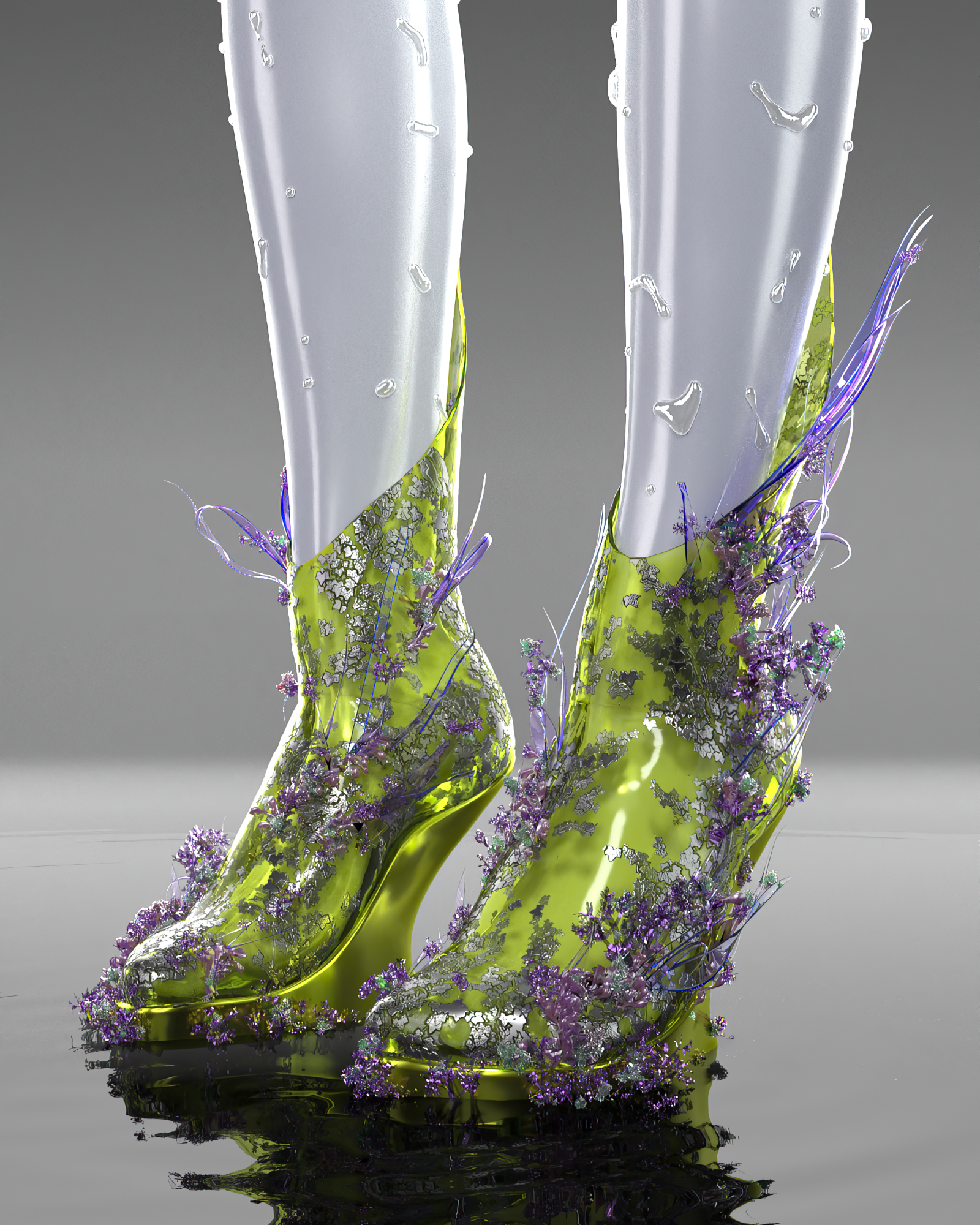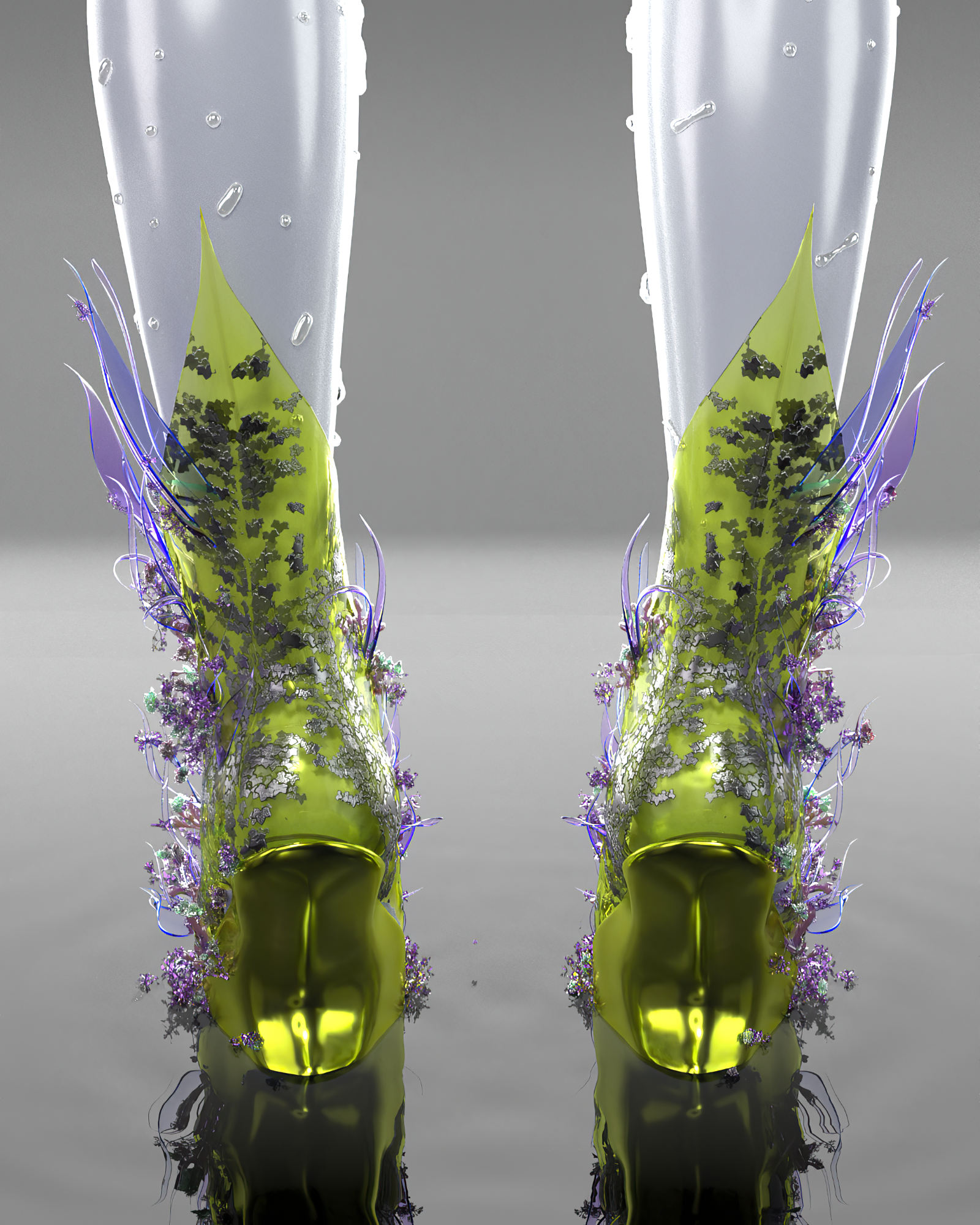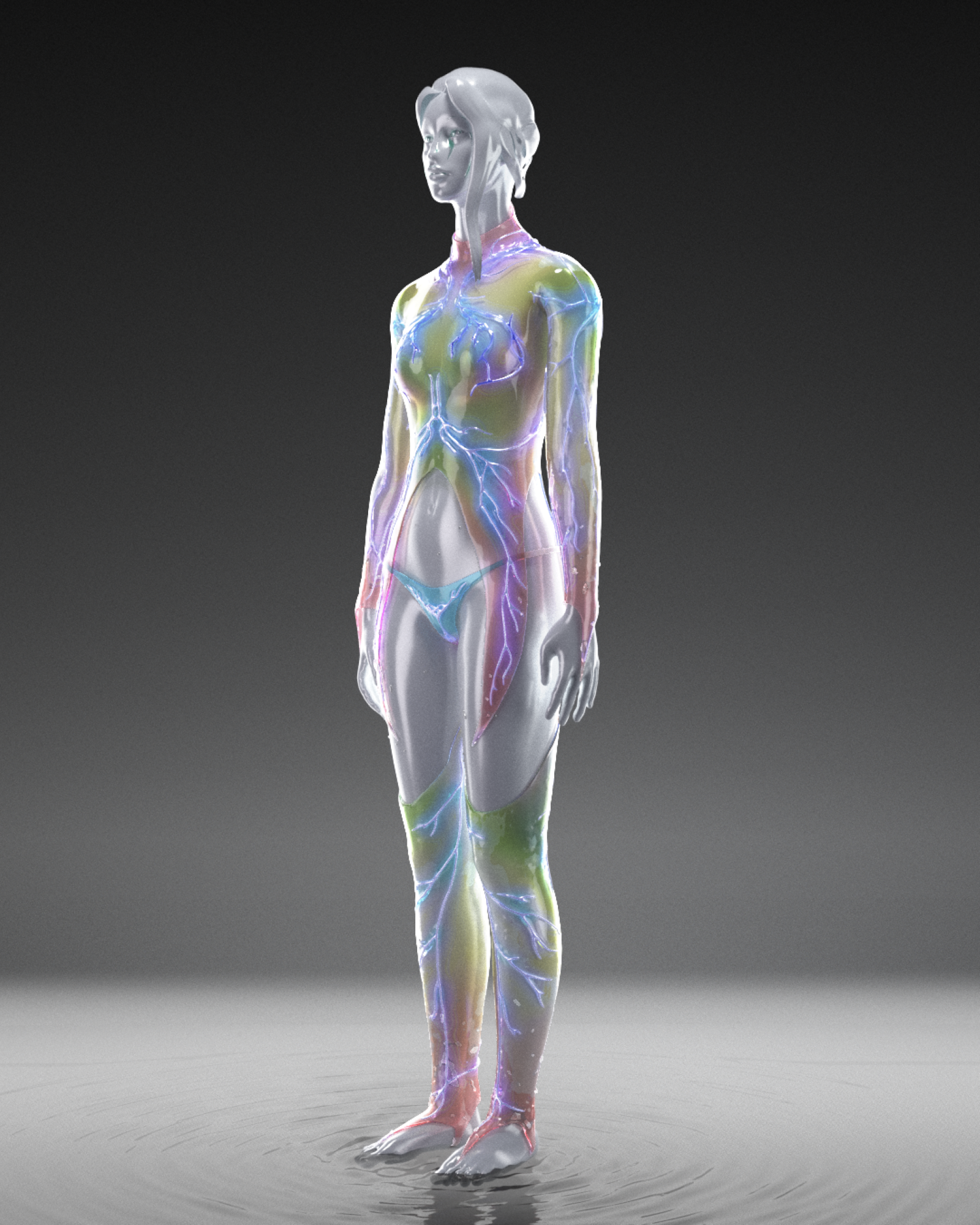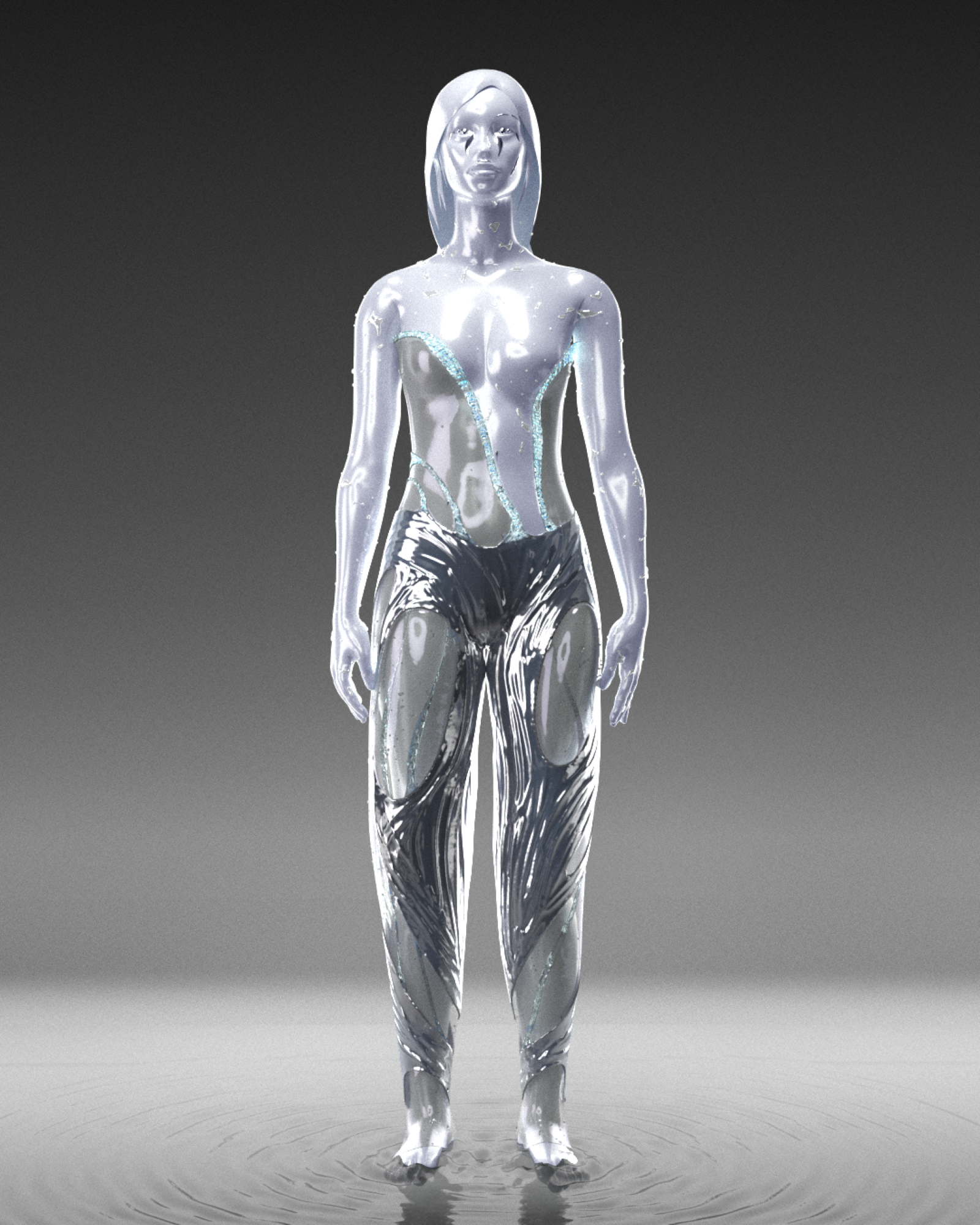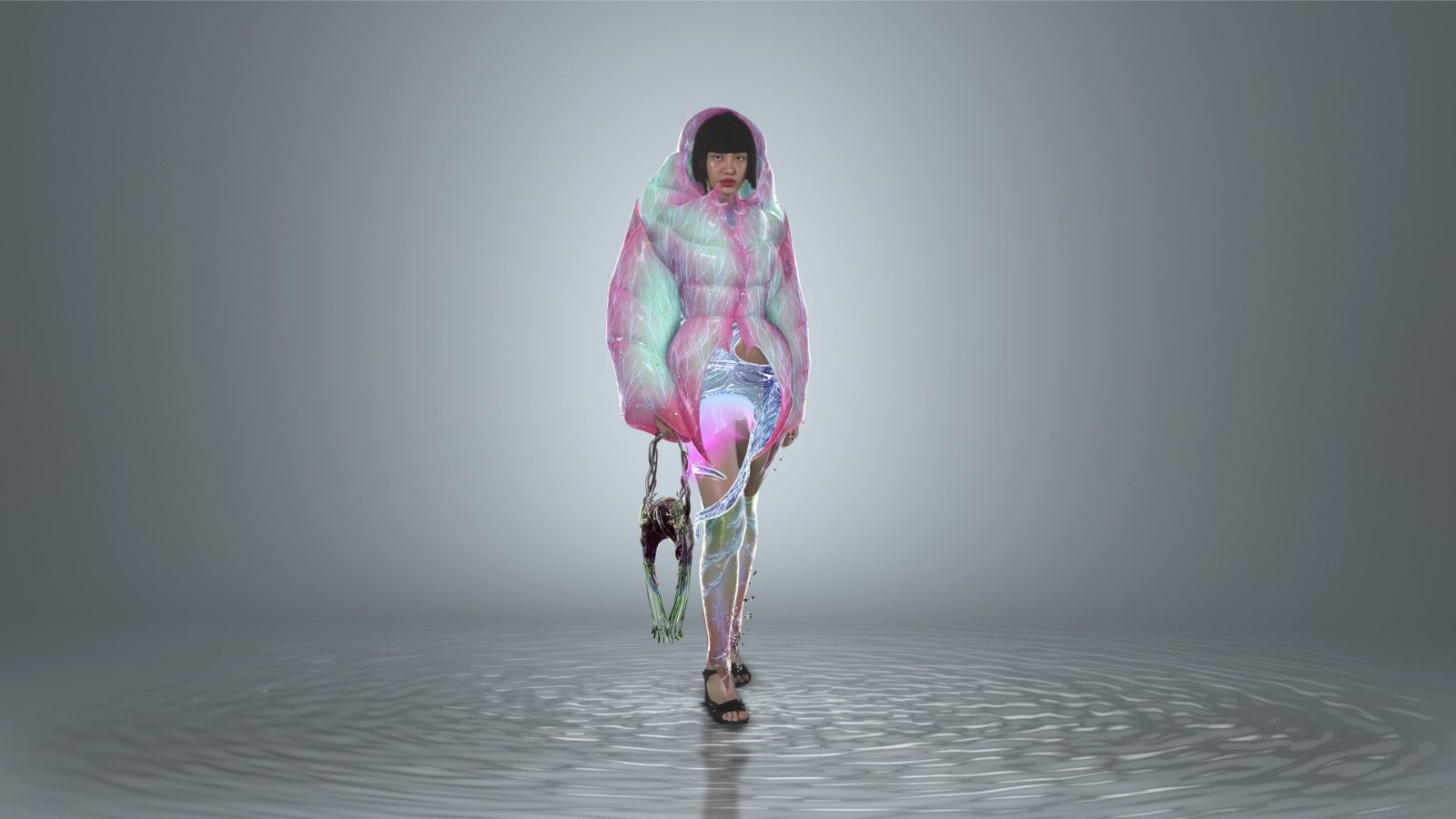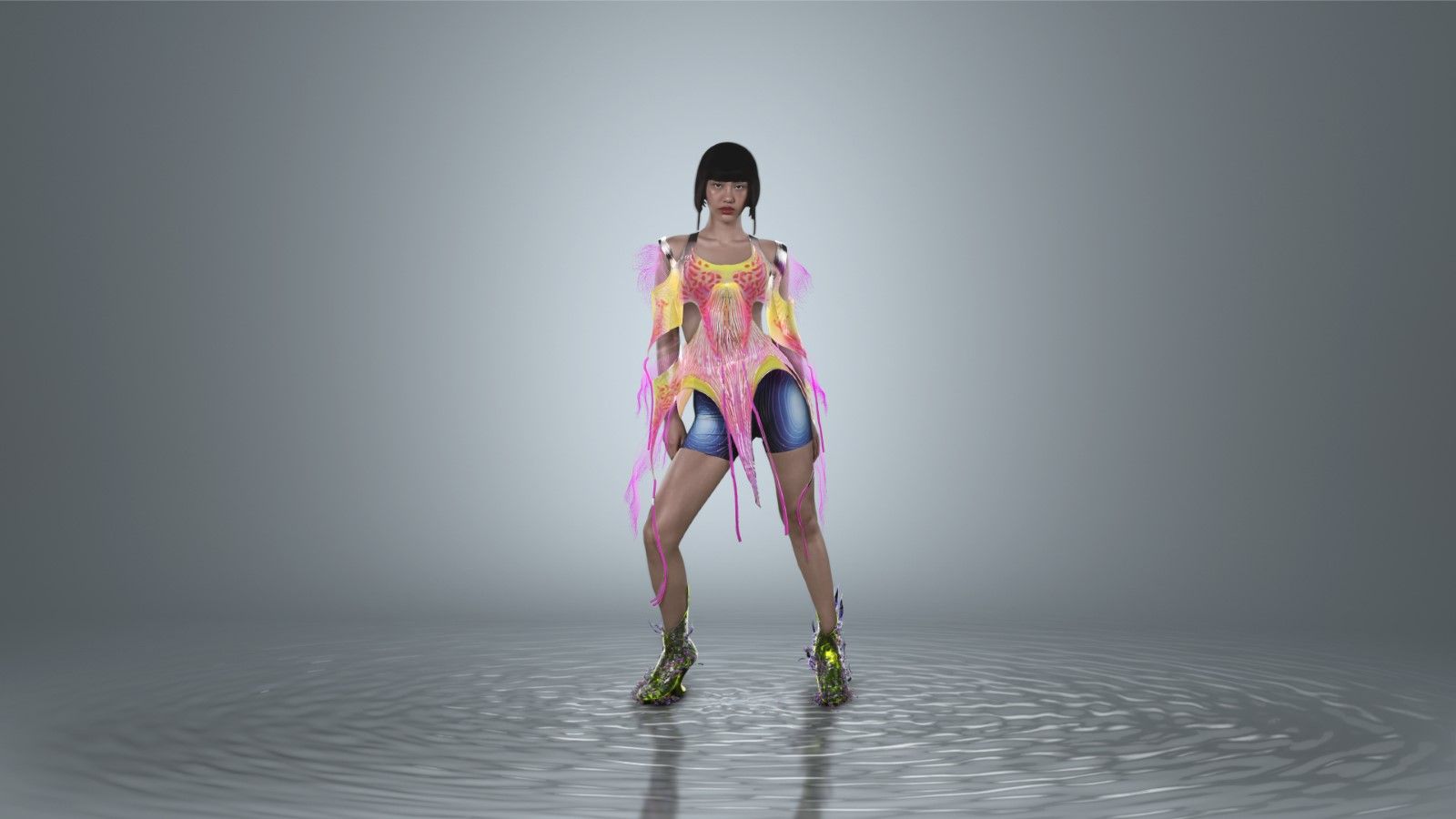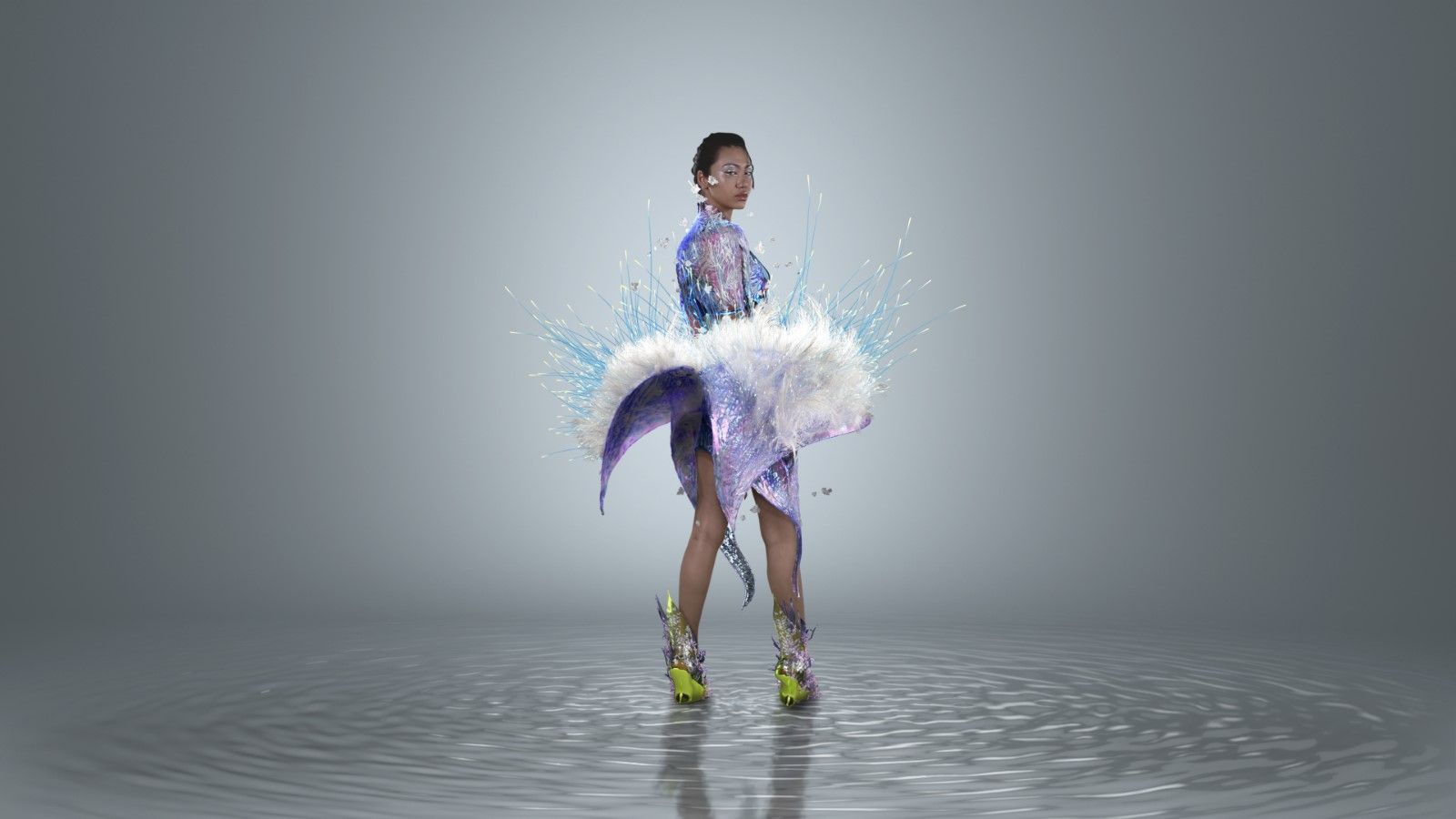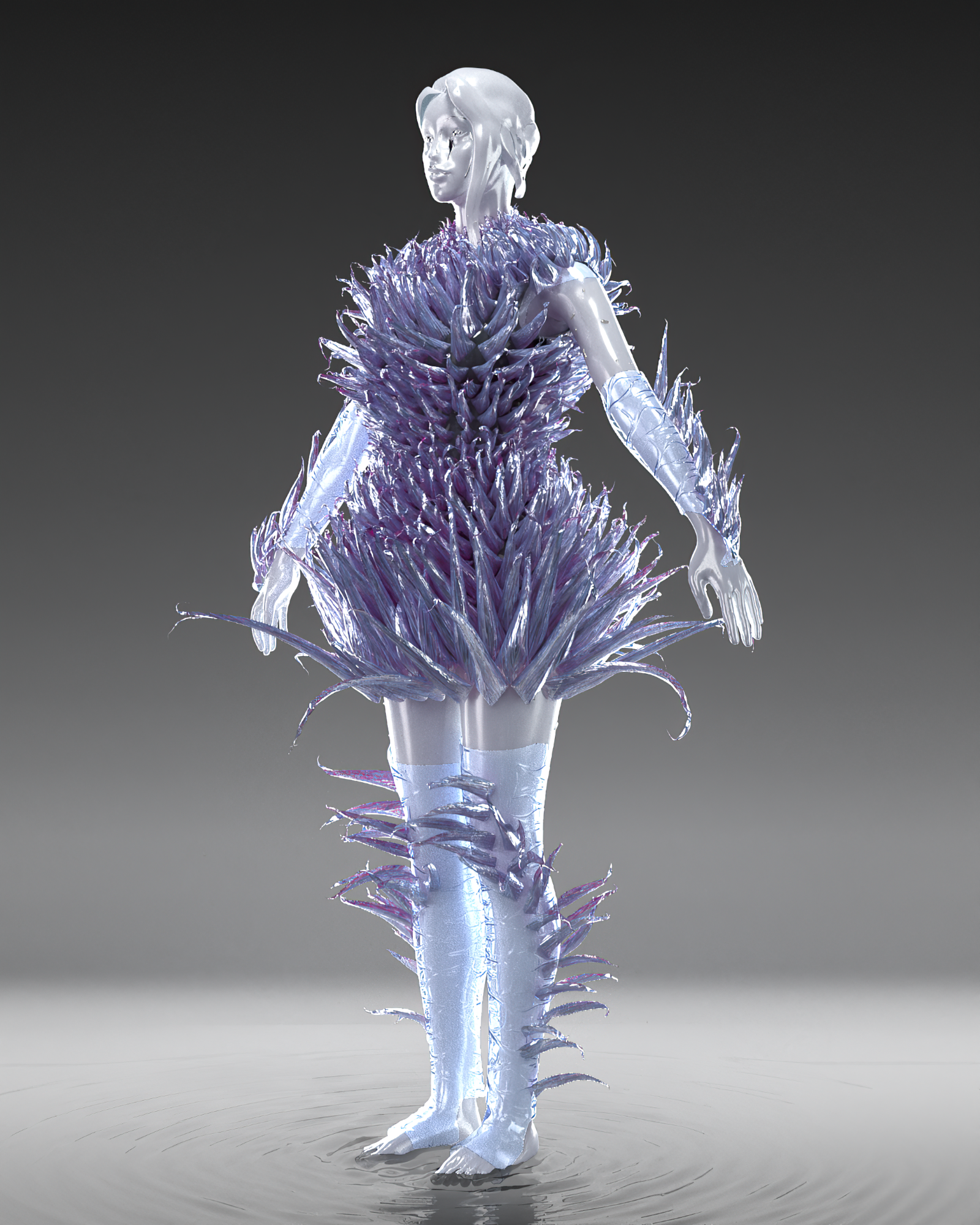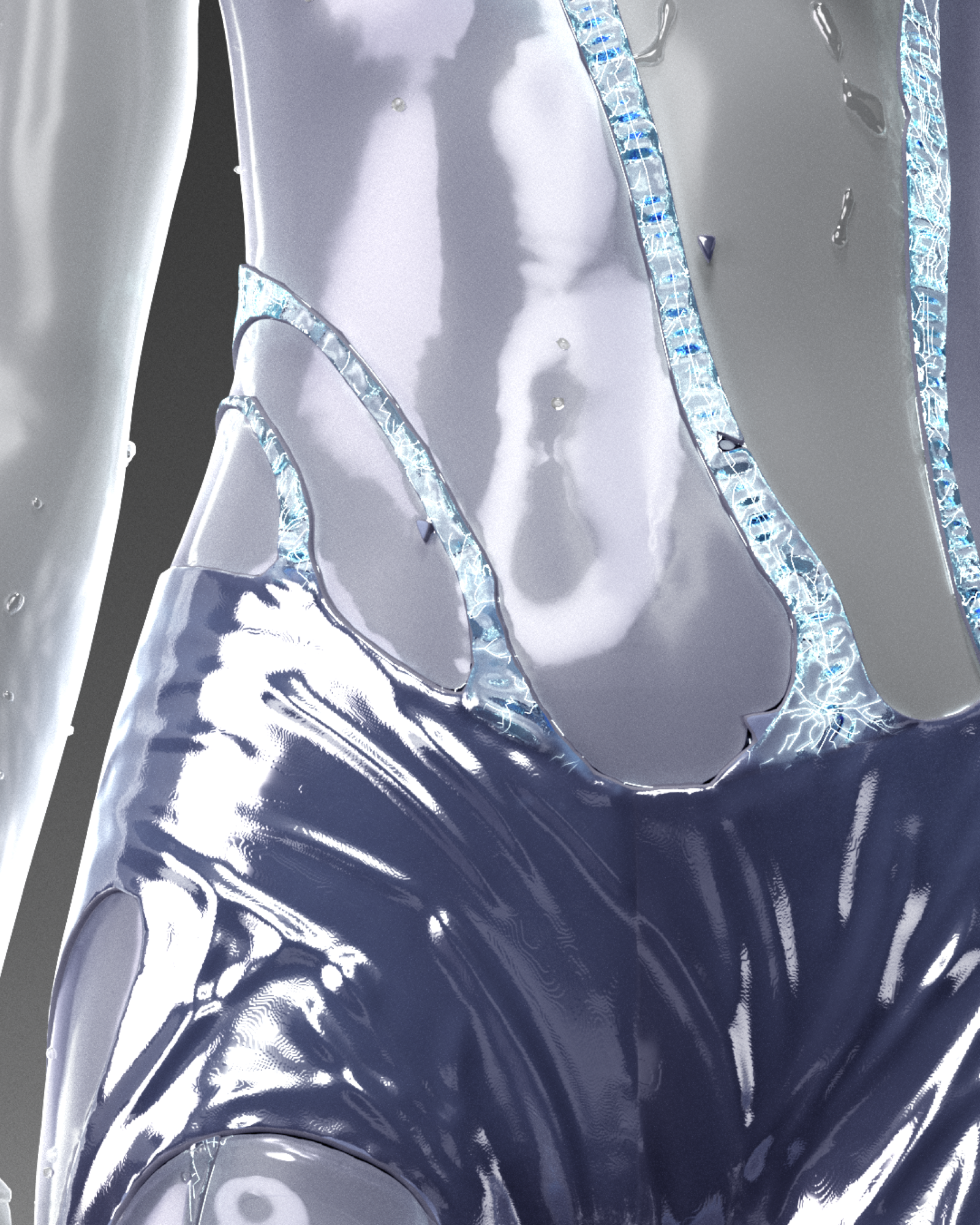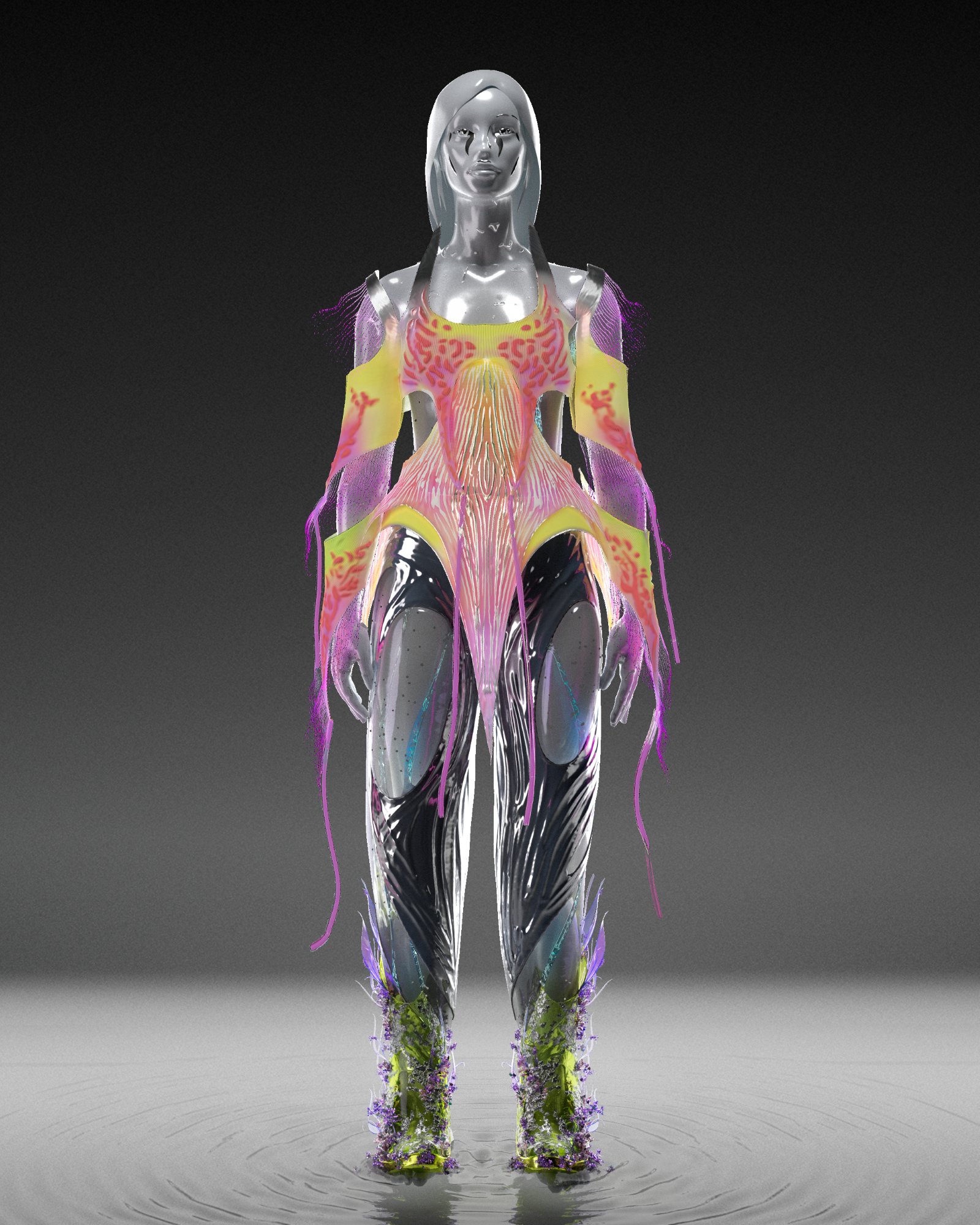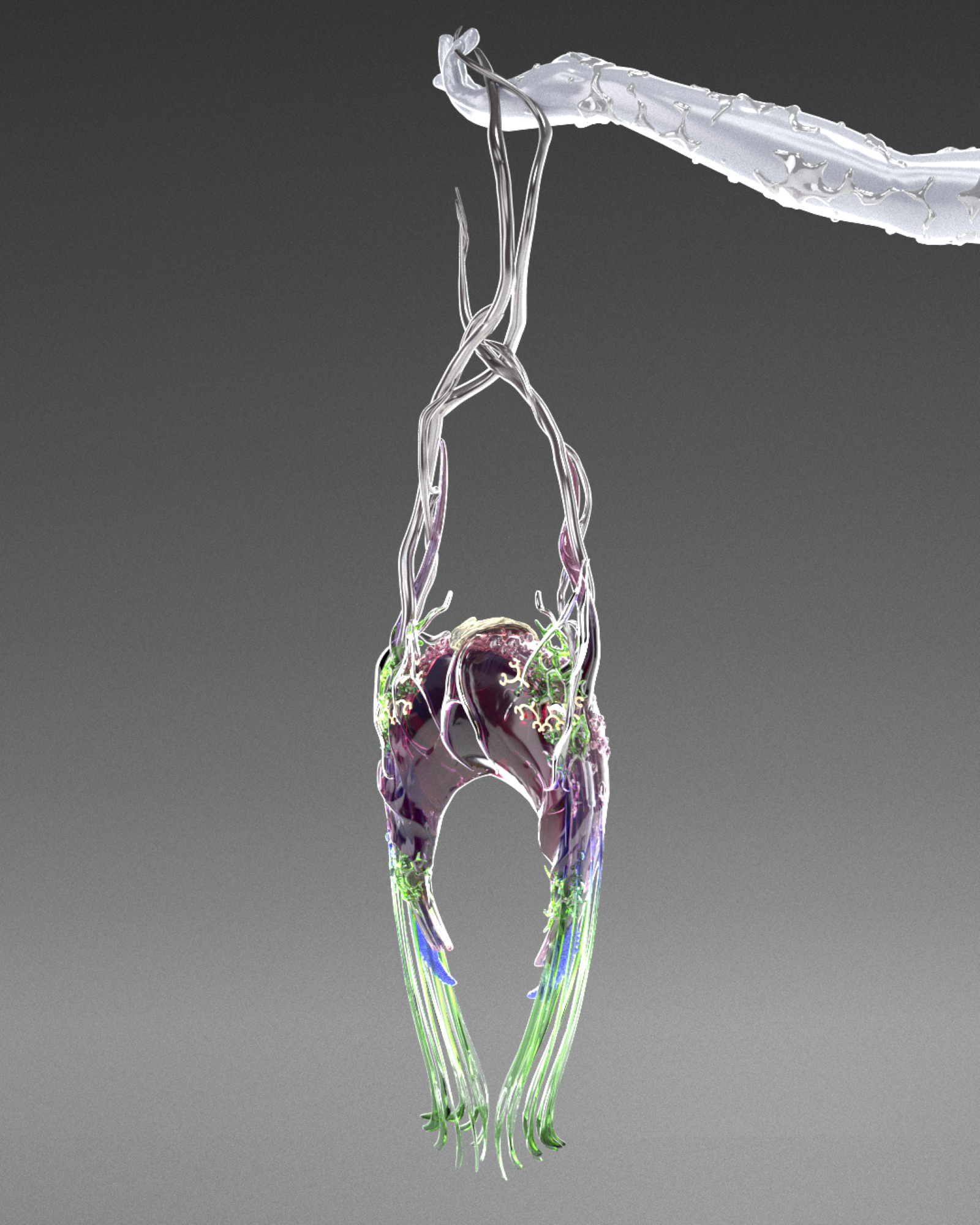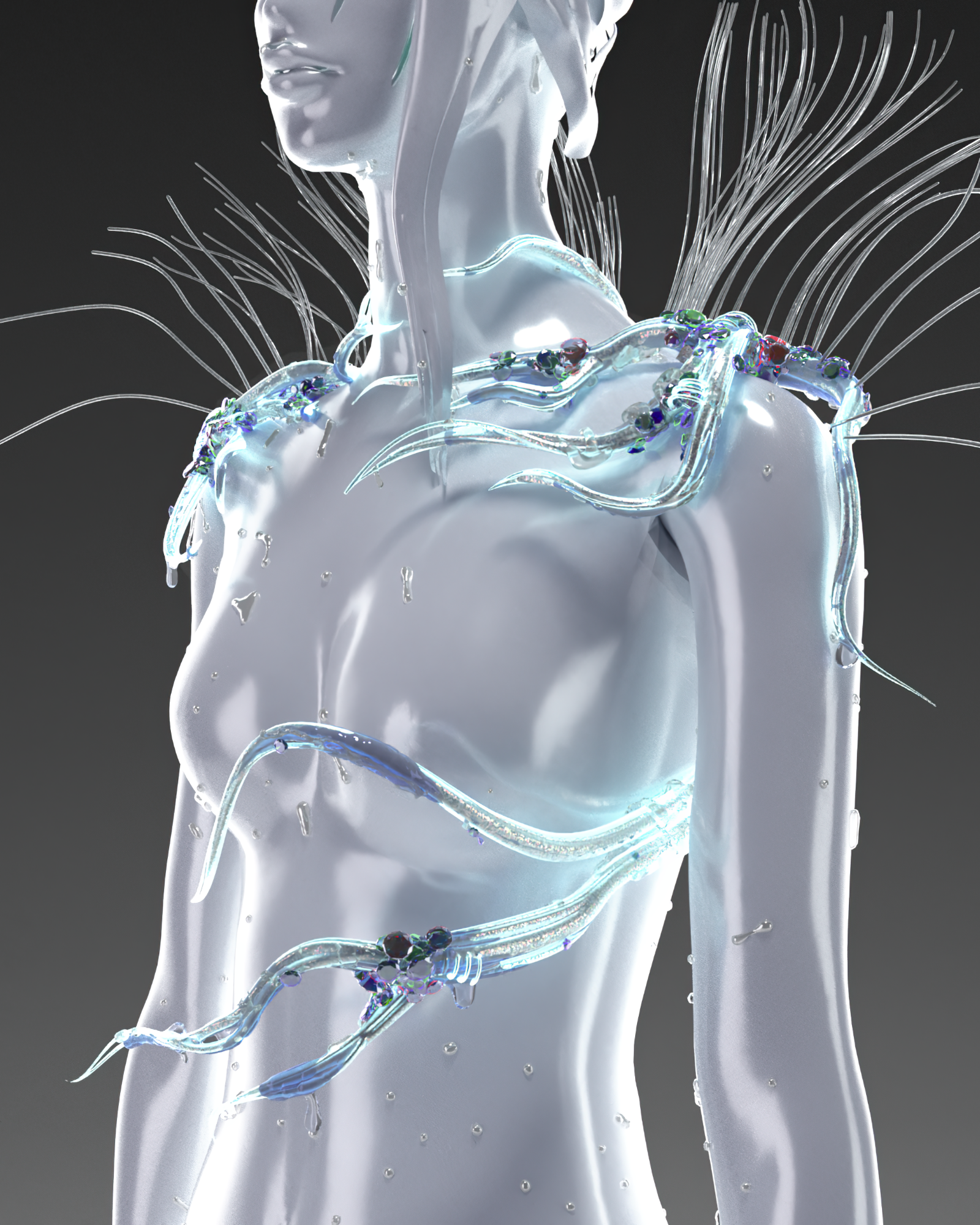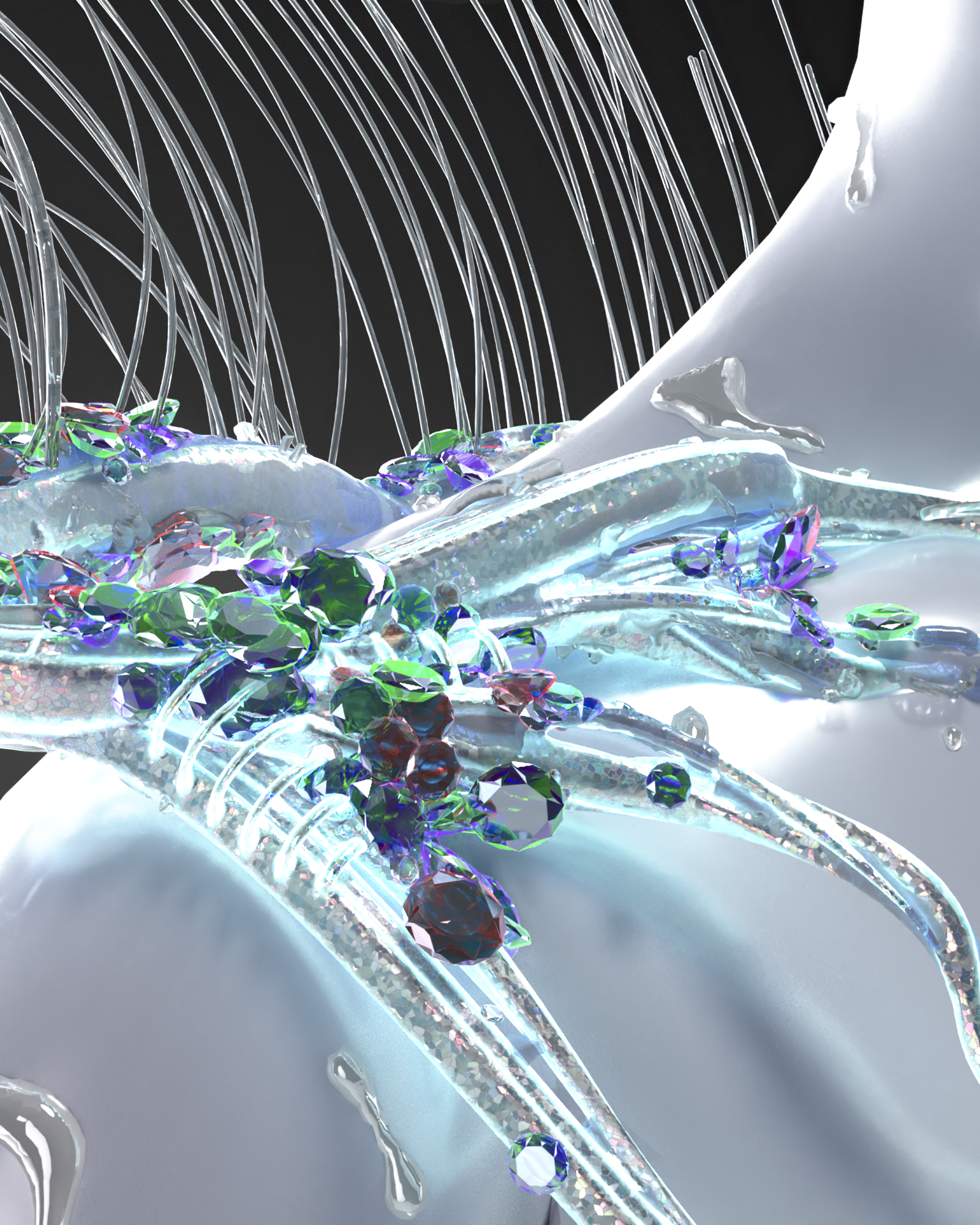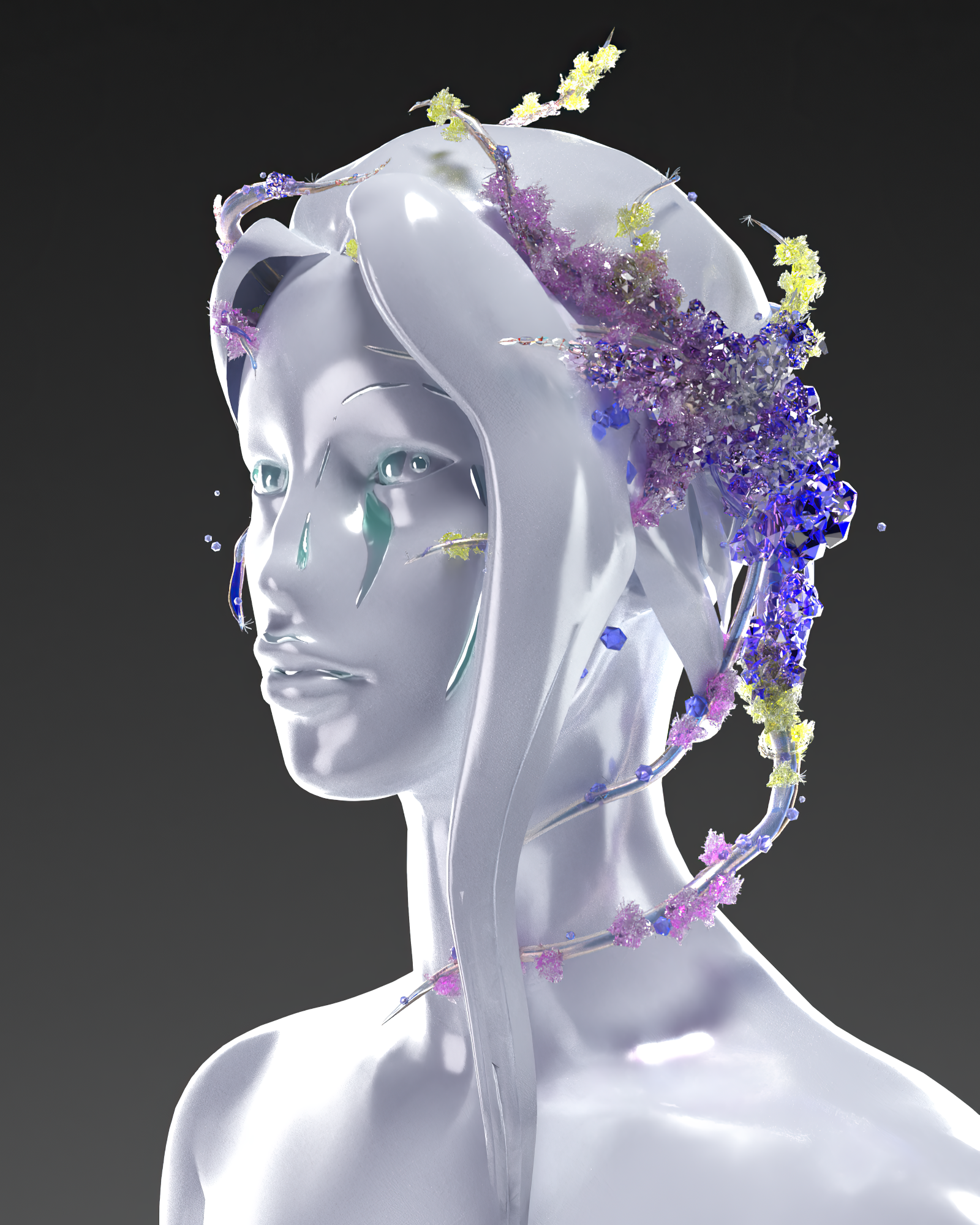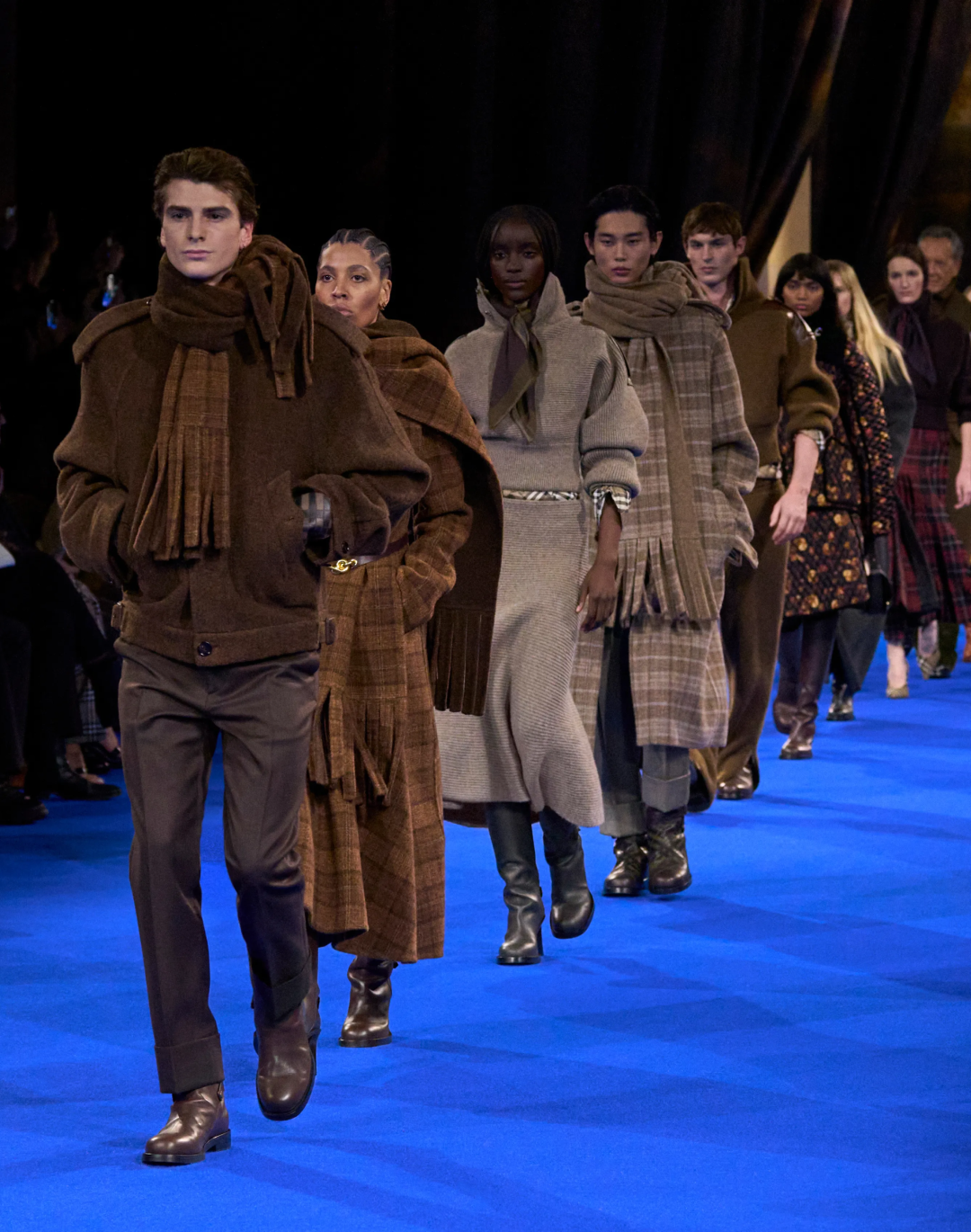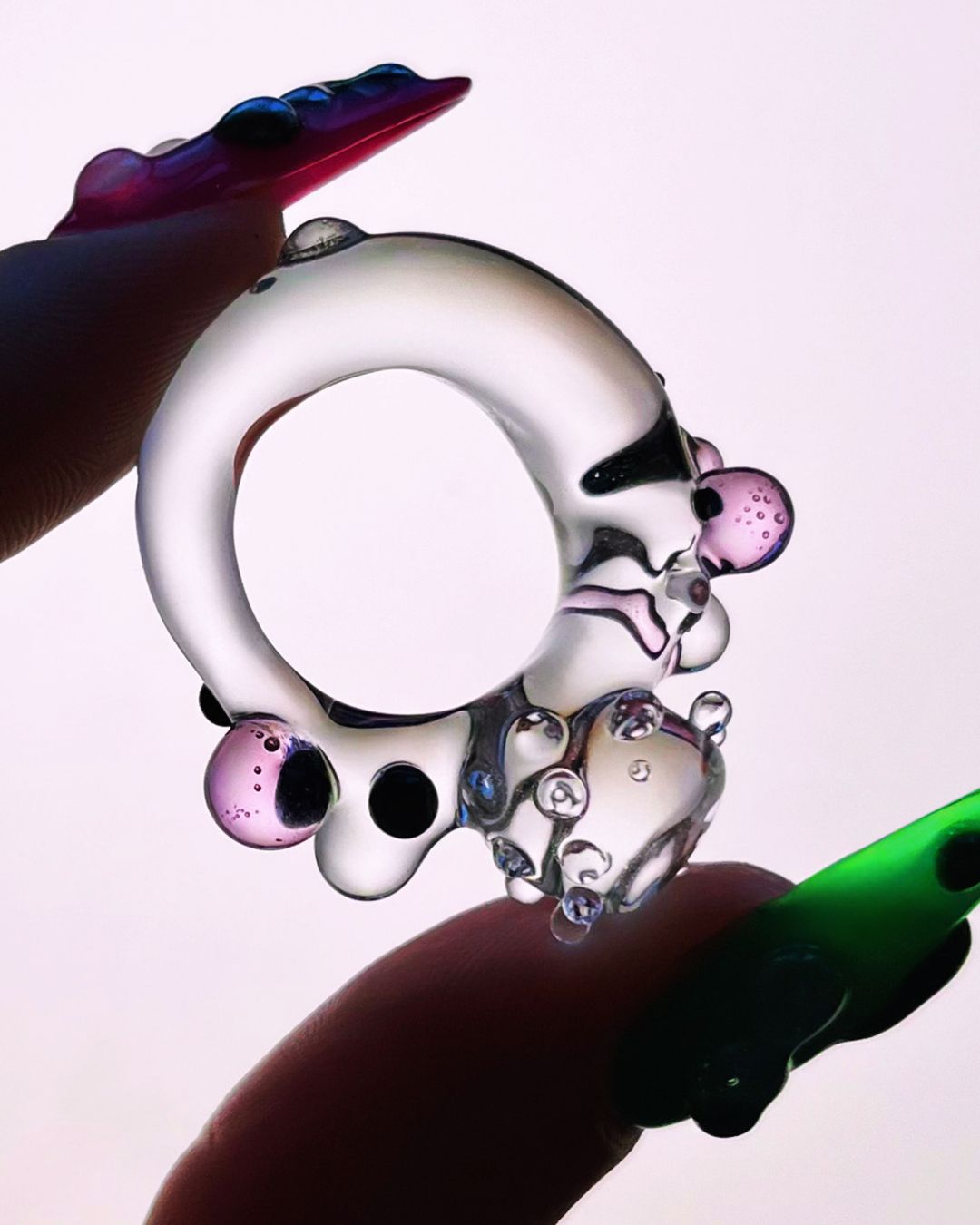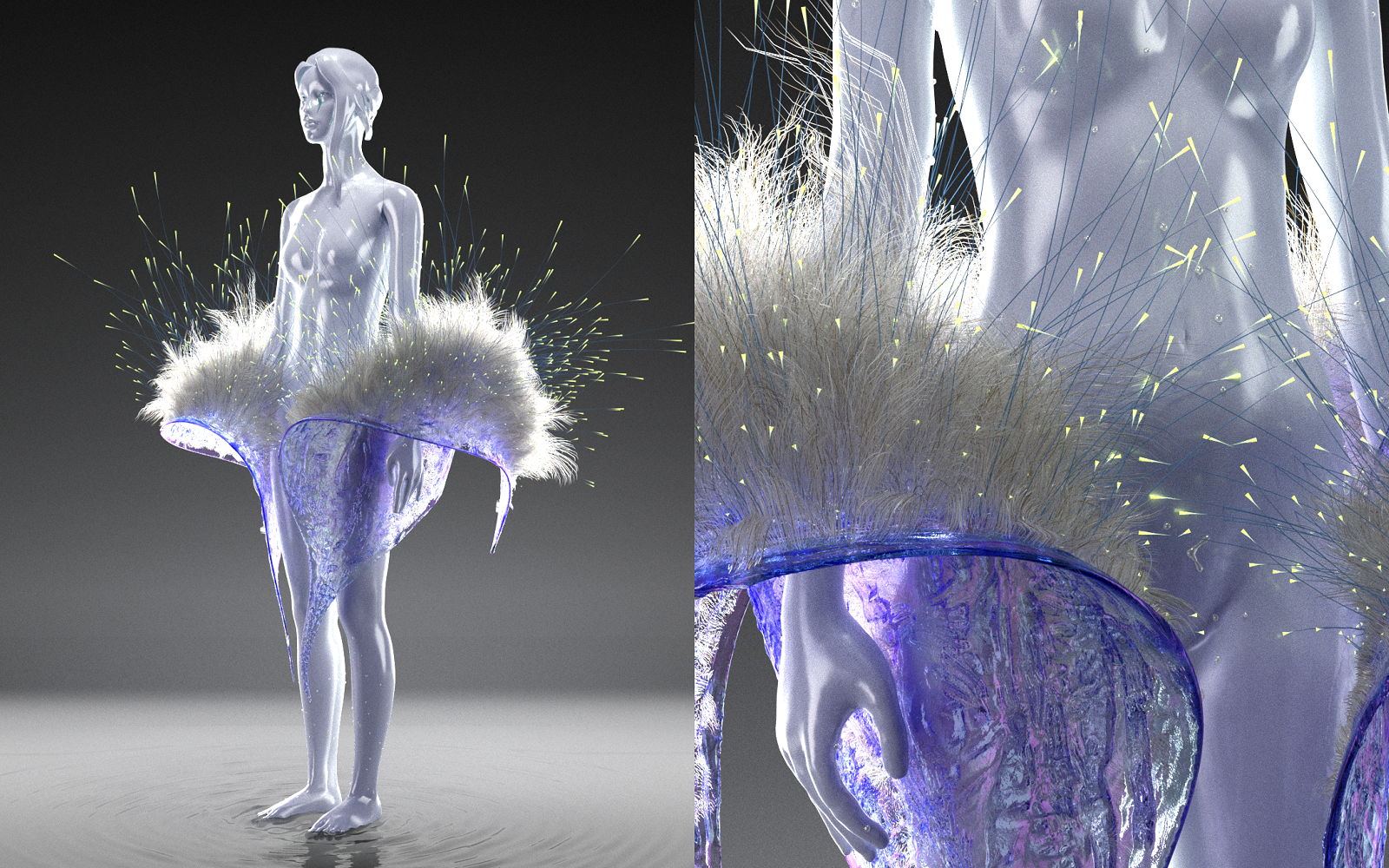
What about digital fashion now that the pandemic is over? The founders of Auroboros of Institute of Digital Fashion say the future looks bright
Last June 12th at London Fashion Week, the digital fashion brand Auroboros became the first ever to present a collection of digital ready-to-wear in the official fashion calendar. With Sita Aballen's styling and in partnership with the Institute of Digital Fashion the brand presented a gamified and interactive shopping experience, introducing the world to a fully sustainable, all digital idea of fashion with a sci-fi aesthetic. But if digital fashion had had its moment of glory during lockdown with a renewed interest in technology and digital meta-verses, what will happen to it now that the lockdown is over? According to Paula Sello and Alissa Aulbekova, founders of Auroboros, interviewed by nss magazine, the future could not be brighter:
«We believe that in the post-pandemic world, the attention on digital fashion will continue to build, as our lives remain intertwined with the positives we have taken from using technology during the lockdown. […] As we re-enter into the world as restrictions ease, digital clothing will transcend beyond our screens. With state of the art AR technology, it will soon be commonplace for digital fashion to merge with our physical surroundings.».
An example of this has been provided in recent weeks by Auroboros itself who together with the Institute of Digital Fashion created the AR Venustrap Dress – a digital garment that could be unlocked via Snapchat via a QR Code present on billboards scattered throughout London obtaining, in three days, one and a half million users and demonstrating the interest that the public has in this version of fashion design 2.0. But beyond social activations, digital fashion has a much greater purpose in the wider panorama of the industry. The new digital strategies promoted by the Institute, in fact, as its founders Catherine Taylor and Leanne Elliott Young explained to us, aim primarily to increase the accessibility of fashion «not just attendance and elitism but also in being able to showcase your work». According to the institute, in fact, the ritual of fashion week is on the road to extinction, in desperate need of radical innovation. The institute's response is that of a merger: «both worlds should work together in symbiosis». Digital fashion is nonetheless «a natural extension of physical couture ateliers», capable of bringing the craft and pattern-making not only close to real life but beyond, «towards newer, more inclusive and innovative directions».
The limits of fashion and the public
There are two limits against which the nascent digital fashion scene is fighting: those of fashion itself and those of the public. The issues of the audience are quite simple: «want to understand how they will truly be able to utilise digital fashion», say the founders of the Institute. Yet the limitations inherent in the fashion world are quite different: from the limited offer of the brands themselves and the sizes on the shelves of retailers to the problems of sustainability and accessibility of the luxury industry, as well as those related to transparency and the protection of fashion talents. «We want to make an active change, not sit on panels and discuss a new future but build one». More accessible fashion can be a more inclusive and data-driven fashion that helps to «map and to inform you of traction and reach».
Yet this integration or symbiosis between physical creators and digital creators sometimes meets the diffidence of some of the major brands: «More traditional houses in fashion might see digital as a threat, however it's a great opportunity. Brands are now having to adapt to the changes in society, the demographic developments and demand for more sustainable solutions. Digital fashion provides positive solutions to the mass.». It must be said, however, that until now the traditional fashion industry, while maintaining control over its prerogatives, has never been openly hostile to digital fashion, quite the contrary. Gucci's items have enjoyed great successes on the Roblox platform, where the digital part of the Gucci Garden Archetypes exhibit has also taken place, Gucci has also created outfits for video games such as The Sims or League of Legends, while Balenciaga presented its FW21 collection through a video game, while last May the first digital fashion show on Animal Crossing was held. In short, the road would seem open.
But how does a digital atelier work?
The presentation of Auroboros' all-digital collection at London Fashion Week was a pivotal moment that signalled first of all a recognition of digital fashion in the mainstream of culture and then a «technological shift» in the industry and in society itself. As the brand's founders pointed out: «Whether through NFT's or digital garments, the traditional fashion world is taking notice, which is another step towards virtual clothing entering the mainstream.». To clarify the current state of digital fashion, we asked Paula Sello and Alissa Aulbekova to tell us their opinion on the main issues that concern the sector: the perception of the public, the way in which a digital garment is created, the relationship between gaming and digital fashion and, finally, what are the concrete advantages that digital fashion can bring to the industry.
Here are their answers.
How does the general public connect to digital fashion? Do you imagine a future where everybody buys and uses digital garments daily?
The general public already interacts with digital fashion most days in ways they likely don't recognise. Digital fashion has technically been around for decades within CGI film costume, video game character outfits and digital attire that players can use to customise their avatars. More recently, we have AR filters that can provide us with digital headwear, a form of digital dress that the general public uses regularly, especially by the digitally native, younger generations. At Auroboros, we have seen the general public connect with our Biomimicry digital collection this way, making our Metamorph Headpiece available as a social media filter for our audience to try on. […] The uptake is on the rise as consumers are intrigued by the creativity and sustainability credentials of virtual clothing. We at Auroboros imagine a future where everybody engages with digital fashion, whether through an avatar in the metaverse or within the physical world via Augmented Reality technology.
Walk us through the creation of a digital garment. What are the main challenges of the process and what instead is easier than traditional couture?
At Auroboros, we create both physical couture and digital ready-to-wear. The design of an Auroboros digital garment begins the same way as physical clothing, with a sketch. Following this stage, the process of a digital garment strays from the production of physical attire. We take the initial drawings into the digital realm using software, such as CLO 3D, ZBrush, Blender and Marvelous Designer. We then experiment until the design begins to resemble our vision. The digital garment undergoes several design processes to polish and finalise the complete piece. We feel that there isn't any aspect of the design process that's necessarily easier than traditional couture. Both physical fashion and digital clothing are crafts in their own right that require different skill sets, so it's hard to compare the difficulty between the two..
Gaming and fashion. Why do you think they're flirting with each other so much lately?
The two worlds have long been so interconnected, as video games were arguably one of the first examples of digital fashion in terms of game character outfits. Especially with customisable characters, players can have fun by expressing their identity via the look of their avatars with the freedom to choose what they are wearing without the judgements and constraints of reality. Auroboros recently partnered with the interactive luxury styling app 'Drest', tapping into the luxury fashion and gaming industry. Auroboros customers could style our digital Biomimicry collection on avatars with the option of purchasing the Auroboros looks they had created. We found that our audience loved the opportunity to be playful with creating head to toe looks. The escapism of gaming paired with the self-expression of fashion makes the two industries so complementary to each other.
Give us a few examples of the possibilities that digital fashion can have for the future of the industry.
Digital fashion opens up limitless possibilities for the future of the industry. In particular, the opportunity for the industry to become more sustainable, a value that is important to the planet and the consumer. We now know that the carbon footprint for a digital fashion item is 97% less CO2 than the equivalent physical garment because virtual clothing is made of unreal materials and digitally delivered to consumers. The uses of digital fashion are even more apparent when you discover that 1 in 10 people buy clothing purely to wear on social media platforms. These garments are essentially already virtual, only visible via a screen, and so it would make sense that digital fashion could replace this instantly. There is also the opportunity for the industry to be more innovative in their design and aesthetics, as virtual clothing the possibilities are endless, with the chance to wear fire, water, moving elements, glowing elements. Anything that can possibly be imagined, can be worn as digital fashion, enabling infinite creativity.










































